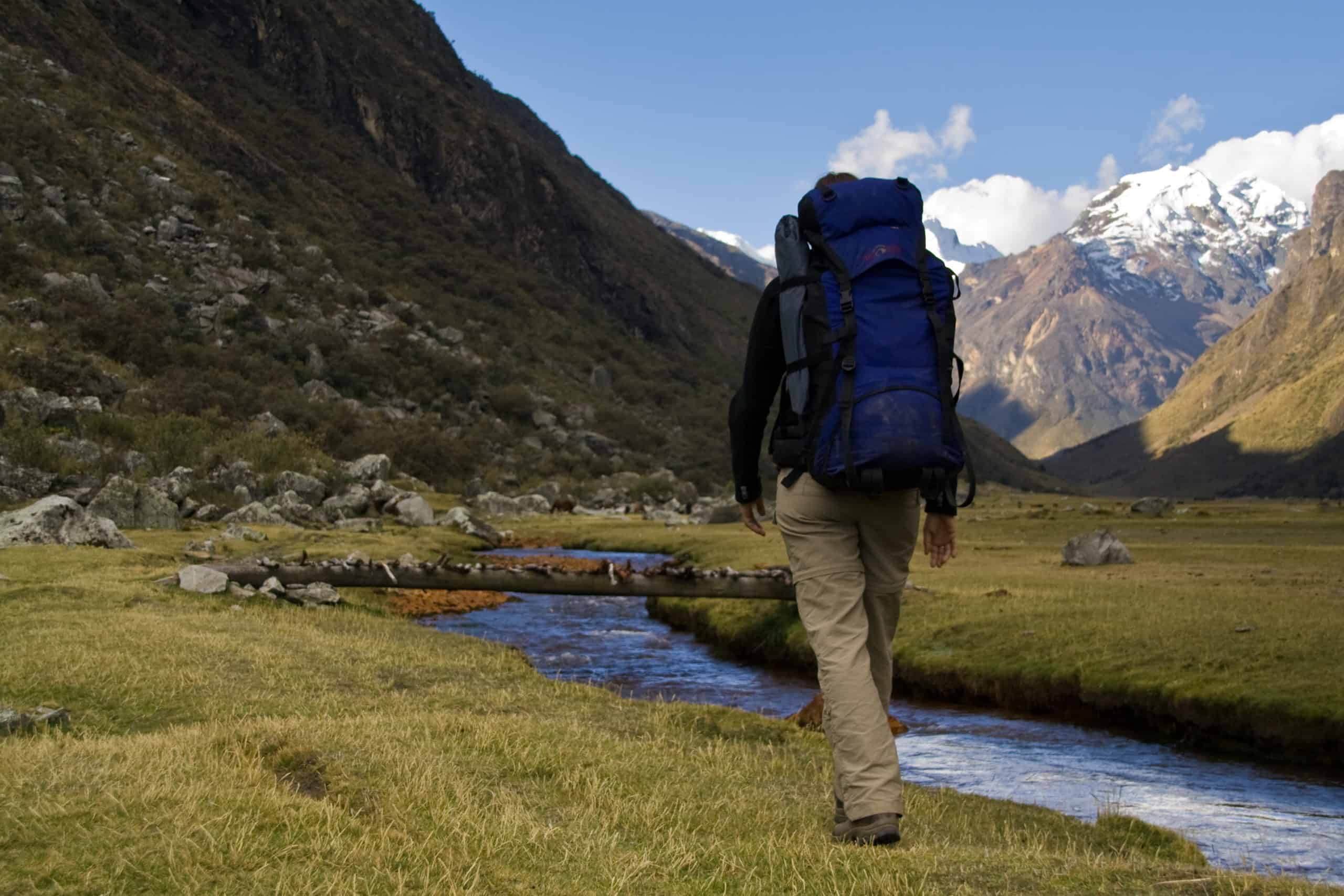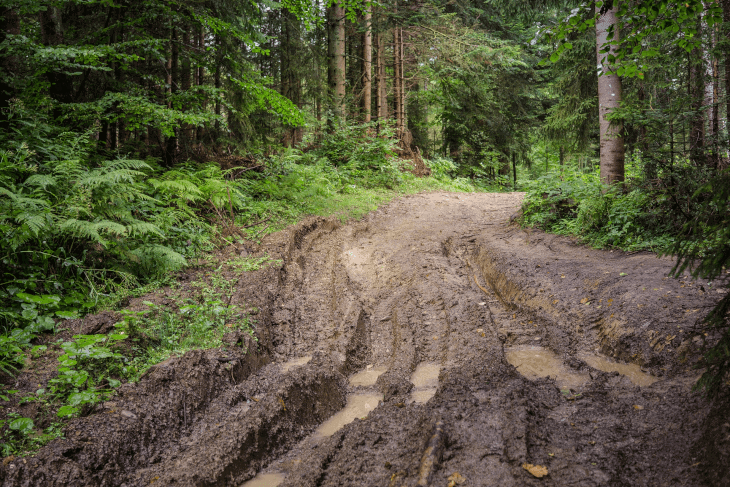You might think that boots are just boots, right? That there’s nothing to complicated about them, and one pair is just as good as another.
That’s a pretty common thought process, but sadly, no—just like all equipment related to hunting, not all boots are made equal, and there are a couple of things you’ll need to know about them before you can make a well-informed purchase.

Why Rubber Hunting Boots, Instead of Regular Hunting Boots?
There are some subtle (and not-so-subtle) differences between these two kinds of boots, and they’re made for different purposes. Here’s how it shakes out.
Regular Hunting Boots. These are shorter and squatter than rubber boots, and they closely resemble hiking boots. They usually have laces so you can tie them as tightly or as loosely as you want, and because they’re shorter than rubber hunting boots—the don’t go up your calf, like rubber hunting boots do—they’re usually easier walk in. They’re usually made from fabric, and/or leather, and/or rubber, and they tend to breathe better than rubber boots, and that can keep you cooler and more comfortable. They may be waterproof, but they may not be as effective at keeping out water as rubber boots, and they’re a better match for dry/good-weather hunting. They may carry your scent, which can be a problem with certain models.
Rubber Hunting Boots. There are tall boots that are usually lace-less, and they’re designed to keep water out and your scent off of them, and they can be very effective at doing so. They’re not as comfortable as traditional hunting boots and they may be more difficult to get on and off, because they’ve come a long way in the last decade or so, and they’re a lot more comfortable than they used to be. They can also be warmer than traditional hunting boots, and you’ll frequently see rubber boots sold as cold-weather boots, both because the rubber they’re made with is a good insulator, and because they continue to repel water as snow melts and gets slushy.
So, there you have it: rubber hunting boots are a little less comfortable, but they can keep you dryer and warmer than traditional hunting boots, and that can be a wonderful thing when it’s rainy or freezing later in the hunting season. They’re also more likely to be scent-proof, because scent doesn’t adhere to rubber the way that it does to fabric.
It’s not uncommon for folks to have two or more pairs of hunting boots, depending on the type of weather and environment they expect to encounter. Some have early-season boots that are breathable, and don’t have too much insulation, and also have late-season boots, that are heavily padded for warmth, but not as breathable. Others have rain boots and dry boots, and wear the appropriate boots based on the weather. Figure out what needs you’ll have when hunting, and piece together your gear.
By the way, you can click over here if you’d like to read about our picks for the best rubber hunting boots.
Features to Keep in Mind When Purchasing
Here’s a brief run-down of some of the features you may come across, along with whether or not they’re truly important. The first aspect is…
100% Rubber / Scent-Free. Compared to the game we’re hunting, humans have a pretty lousy sense of smell, and we tend to forget how quickly animals pick up our scent the minute we enter their environment. Scent is so strong, that walking into a game environment without a scent-masking strategy is basically like walking up to the edge of the woods and yelling, “Hello, animals! I’m here! I’m here to hunt you!” Not a good strategy, and to be avoided if possible.
So masking your scent is a pretty important aspect of hunting, and while most people remember to bathe themselves to get rid of their scent and to launder their clothes with scent-masking products, they forget about the one item of clothing that never gets laundered, and carries scent like it was designed to do so…
That’s right: their boots. Boots made from fabric capture your scent, and then telegraph that scent to the entire forest the moment you set foot on the trail.
This is, perhaps, the biggest advantage of rubber boots: scent does not attach the rubber itself, and you can trudge around in these all day long, and keep your scent signature to a minimum.
So, it’s important that the boots you select are 100% rubber. When a boot is 100% rubber, the manufacturer will usually say so in the advertising materials. Keep in mind, not all boots are 100% rubber—many are a mix of rubber and fabric—and that mixture doesn’t mask your scent as effective as rubber-only.
Pro-tip: In the description of many boots, you may see the word “neoprene.” Neoprene is a rubber, and it’s specifically chosen for its water-resistant qualities. It’s light-weight, flexible, and at the right thickness, 100% water-proof. It’s very commonly used in waterproof products, including underwater products, like diving suits, scuba googles, and so on.
Comfort Rating. You may see that a few of the boots discuss a “comfort rating.” This generally refers to the range of temperatures in which the boot is designed to keep you warm/keep you cool. If a boot has a comfort range down to -20 F, it means the manufacturer believes the boot won’t keep you warm in temperatures below -20 F, and if a boot has a comfort range up to 50 F, that means the manufacturer believes the boot is going to make you hot at temperatures above 50 F. It’s not that you can’t wear it above 50 F, it’s that the boot is likely to be pretty toasty (something like wearing a sweater in warmer temperatures). You *can* wear boots in temperatures above the higher threshold—you may be uncomfortable and end up sweating a lot—but it’s not a good idea to wear boots in temperatures below the lower threshold—in other words, if the lower threshold of the comfort rating is -20 F, wearing them in -30 F weather is very unwise.
Insoles and Outsoles. Outsoles are on the underside of your boot, and connected with the ground / dirt / mud / ice / snow beneath you; insoles are inside of the boot, and they’re what touch your socks. On outsoles, the tread is very important, and a 3-D tread with teeth that stick, with plenty of room between the teeth, are usually a good bet—they’re pertinent enough to pierce the ground, but mud / much / snow / etc. doesn’t get stuck between the teeth. On insoles, molding is often a good feature to look for—insoles that are molded to the human foot disperse weight, absorb some shock, and provide a little bit of stability as you walk. This sounds like a no-brainer, but older hunting boots did not have molded insoles, and they could be torturous to walk on, even if they were cushioned. Boots with molded insoles are great for longer hikes.
Toe Shape / Material. Take a look at the tip of the boot, to see if it’s pointed slightly upward. That design makes them much easier to walk in, and they’re usually a much better fit for pre-hunt hikes or “spot-and-stalk”-style hunting. If you’ll be sitting up in a tree stand not too far from the forest’s edge, or if you’re hunting on a land lease that’s not too big, “walk-ability” may not be too important, but if you will be hiking / trekking a lot, we highly recommend choosing rubber boots that look like they’re made for mileage.
We’ve gotten some questions about steel-toed rubber boots, and in our experience, there are very few rubber boots with steel toes. Most boots with steel toes are work boots, which are shorter and squatter than rubber boots. The only steel-toed rubber boots we know of are the TINGLEY Economy Boots, and those, too, are geared towards work, and not hikes or hunting.
Breathability / Insulation. Breathability refers to the boot’s ability to keep you cool, and insulation is the boot’s ability to keep you warm and dry. These features are often at conflict with each other, because breathable fabrics don’t always insulate so well, and insulating materials don’t always breathe so well. Typically, rubber boots made for warmer weather will be more breathable (and that breathable area will usually be above the ankle), and rubber boots made for colder weather will be less breathable, and may be a thicker and less flexible.
One more word about insulation, before we move on: insulation is often measured in the thickness of the rubber in the boot (and commonly, the thickness of the neoprene). A thickness of 5mm seems to be the industry standard, and “all-weather” boots tend to have a neoprene thickness of between 2mm and 5mm; cold-weather boots may have a neoprene thickness of more than 5mm.
Shaft Length. As we mentioned earlier, rubber boots tend to have a much longer shaft than regular hunting boots, and whereas regular hunting boots stop above your calf, rubber boots are meant to go up to the middle of your calf or higher. That’s by design, and it’s a great feature—if you’ve ever worn a regular hunting boot or hiking boots, stepped in (what looked like shallow) mud, and pulled your foot out and lost your boot, you know how wonderful a long rubber boot can be. Rubber boots tend to have lengths of anywhere between 15 inches to 18 inches, from the base of the heel to the top of the boot. Your height and your personal preference (what feels right) will dictate the length of your boot.
Boot Mouth Clasps / Elastics. This is a design feature which may not seem that important, but people sometimes have very strong feelings about: the tops of rubber boots. Rubber boots used to feature an “open mouth” design, where the boot just kind of stopped at the top. Now, must boots either have some sort of clasp so that you can tighten the top of the boot, or the boot top is elastic, and grasps at your calves so that nothing falls into your boots.
This feature is also a matter of personal taste. The elastic is great because you don’t have to adjust it and make sure it’s as tight on one leg as it is the other, but it may be tighter than you want, and it can wear down and become loose over time. Up to you.

Remember What Captain Dan Said
Remember that part of Forrest Gump, where Captain Dan tells Forrest that the most important part of a soldier’s uniform is his or her socks? He’s 100% right, and the nicest hunting boot in the world isn’t going to help you much unless you have a good pair of hunting socks. For thickness, we like Carhartt Men’s Arctic Heavyweight Wool Boot Socks, which having wicking capabilities, and are nice and comfy (in our experience!).
One other tip about socks before we move on: when you’re trying on your boots, make sure to do so with the socks you’ll be using on your hunt. Hunting / hiking / camping socks tend to be much thicker than regular socks, and you want to be certain that your boots fit when you’re wearing the thick socks you’ll wear during a hunt.
One Other Pro-Tip Before We Wrap Up…
Perhaps even moreso than with regular hunting boots, you want to make sure you break rubber boots in before using them. Rubber boots aren’t as flexible as other types of hunting boots, and they usually need to be loosened up a little bit—but your feet also need to get used to them, and wearing them around the house (when they’re clean) and around your property (when you’re doing yardwork / taking out the trash / whatever), can help settle them a little bit.
Alright, that’s it for rubber boots. Find your pair and wear them in good health and good hunting!



